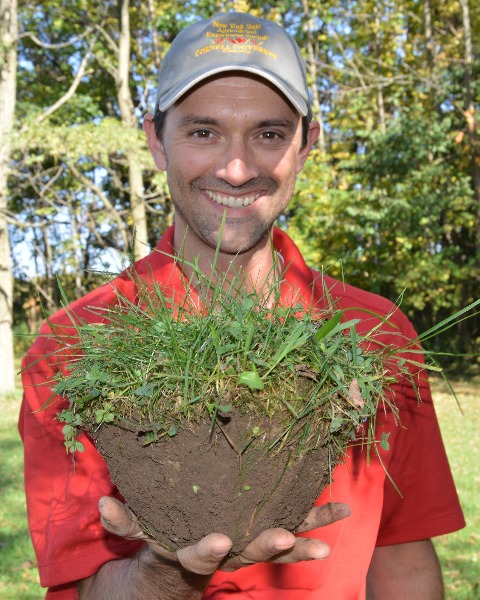Back
Student 10-Minute Paper
Plant-Insect Ecosystems
Student Competition
Student
Grad Competition P-IE: Biocontrol - Pathogens
(2nd Place) Using soil extracellular enzymes to quantify shifts in lifestyle function of Metarhizium anisopliae after exposure to varying qualities of organic matter
Monday, November 6, 2023
9:24 AM – 9:36 AM ET
Location: Gaylord National Resort & Convention Center, Maryland 3-4

Morgan Swoboda (she/her/hers)
PhD Student
Cornell University
Geneva, New York
Kyle Wickings
Assistant Professor
Cornell University
Geneva, New York
Presenting Author(s)
Co-Author(s)
In turfgrass systems in New York, managers are faced with limited tools for pest control, especially on home lawns and at schools. Entomopathogenic fungi (EPF) such as Metarhizium spp. can occupy various ecological niches within the soil as saprobes, insect pathogens, or through associations with the rhizosphere and are commonly suggested as biological control tools for root-feeding pests. However, their use in the field is limited because of their low efficacy and high variability. Little is understood about how changes in soil organic matter (OM) quality may affect the ecological function and biological control capacity of EPF, specifically Metarhizium. Soil mesocosm experiments with varying OM qualities were used to measure soil extracellular enzyme production through fluorescent and colorimetric assays to determine if changes in OM quality affect the ecological function of Metarhizium. Microbial respiration was used to measure shifts in Metarhizium organic matter utilization over time. By quantifying enzymes produced during insect pathogenesis or saprotrophy, we can understand the interaction between organic matter quality and EPF ecological function. We hypothesize that enzymes related to insect degradation will increase with the addition of insect cadavers, while enzymes related to plant degradation will increase when exposed to high or low-quality plant material. Data on enzyme production, respiration, and pathogenicity bioassays will be reported during the presentation. This is the first study to use extracellular enzyme production and other methods commonly used in soil microbial ecology to understand the multifunctionality of Metarhizium in combination with different qualities of organic matter.

.png)

